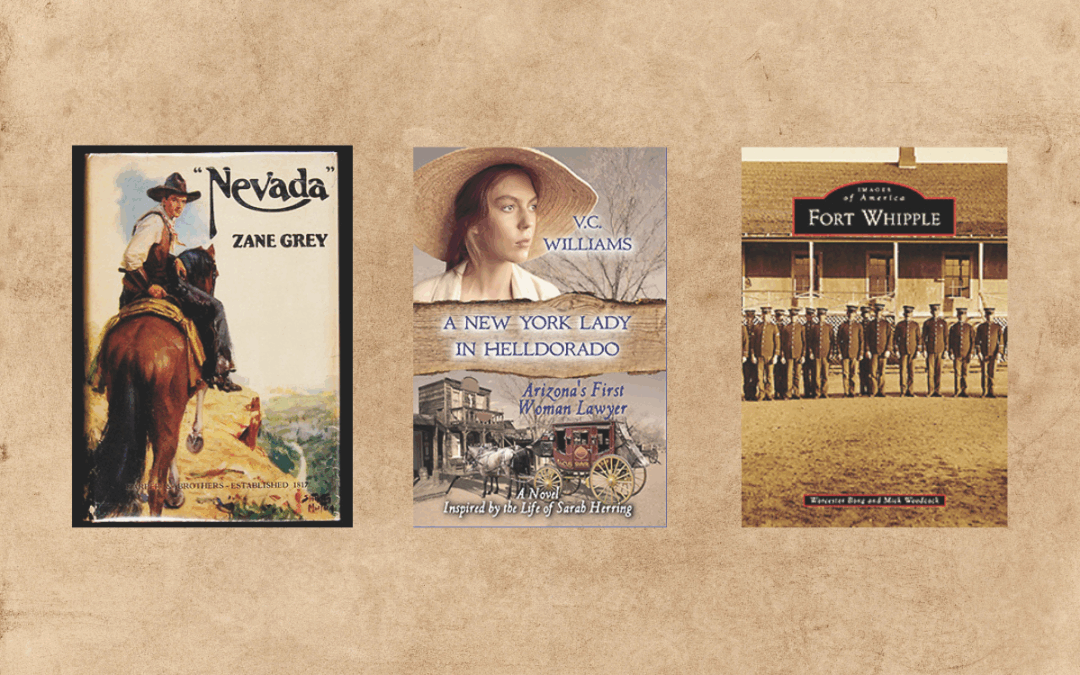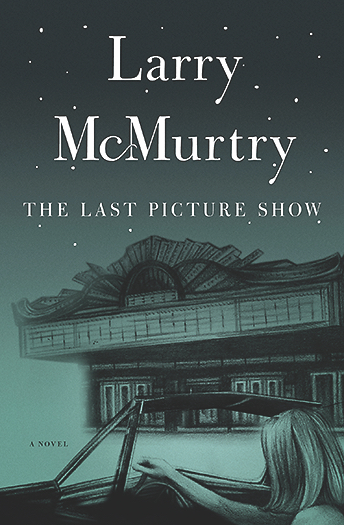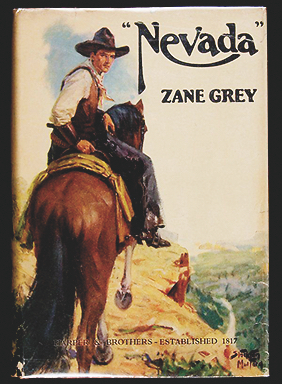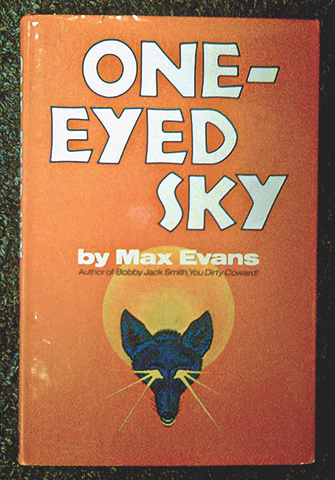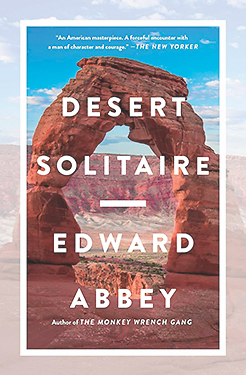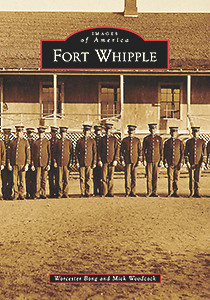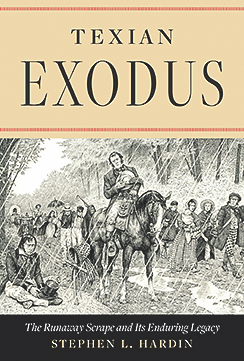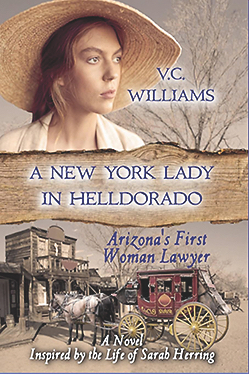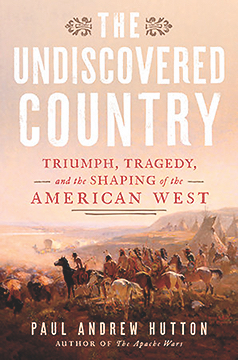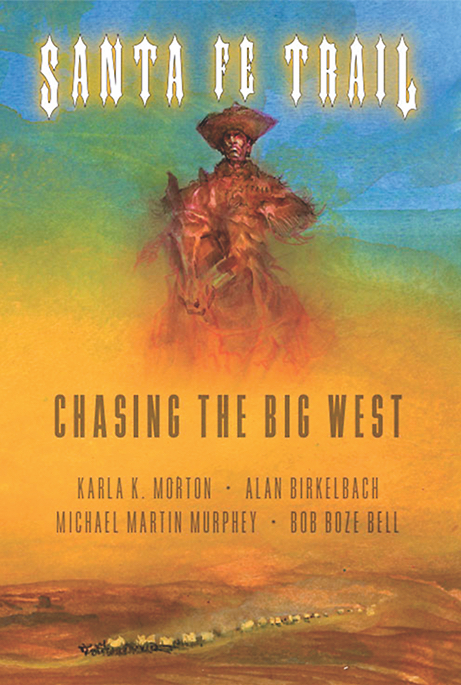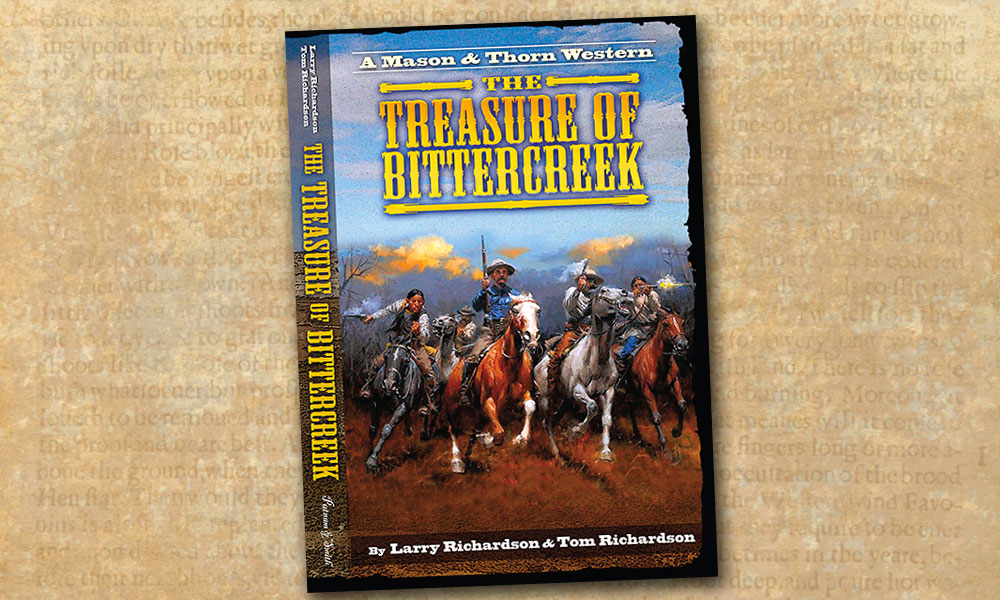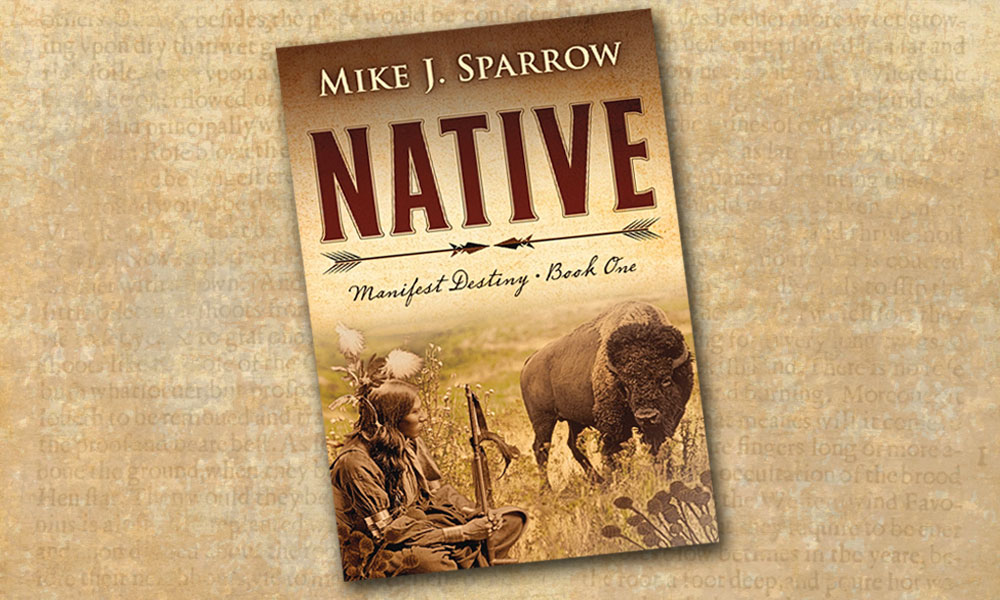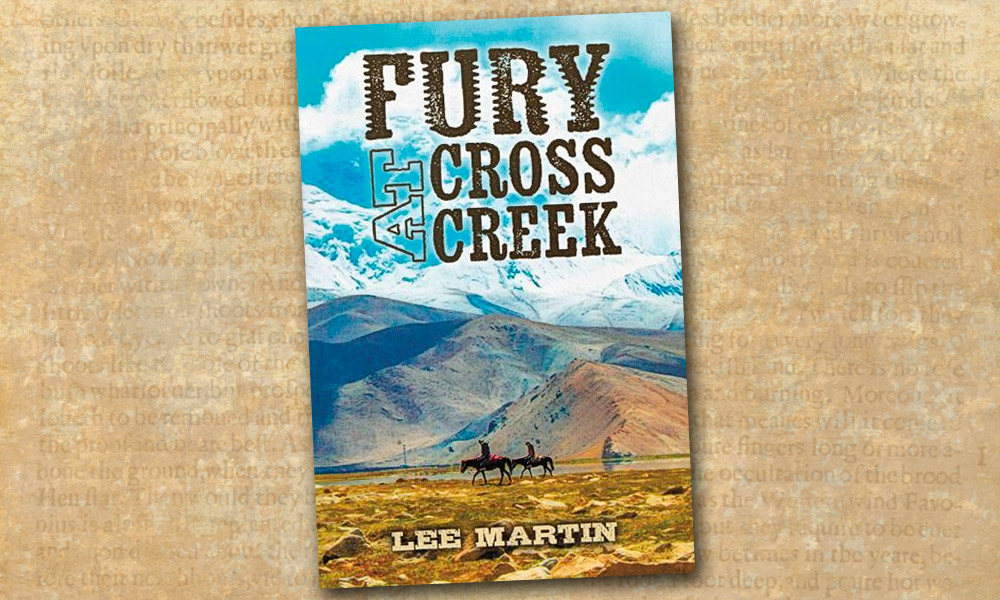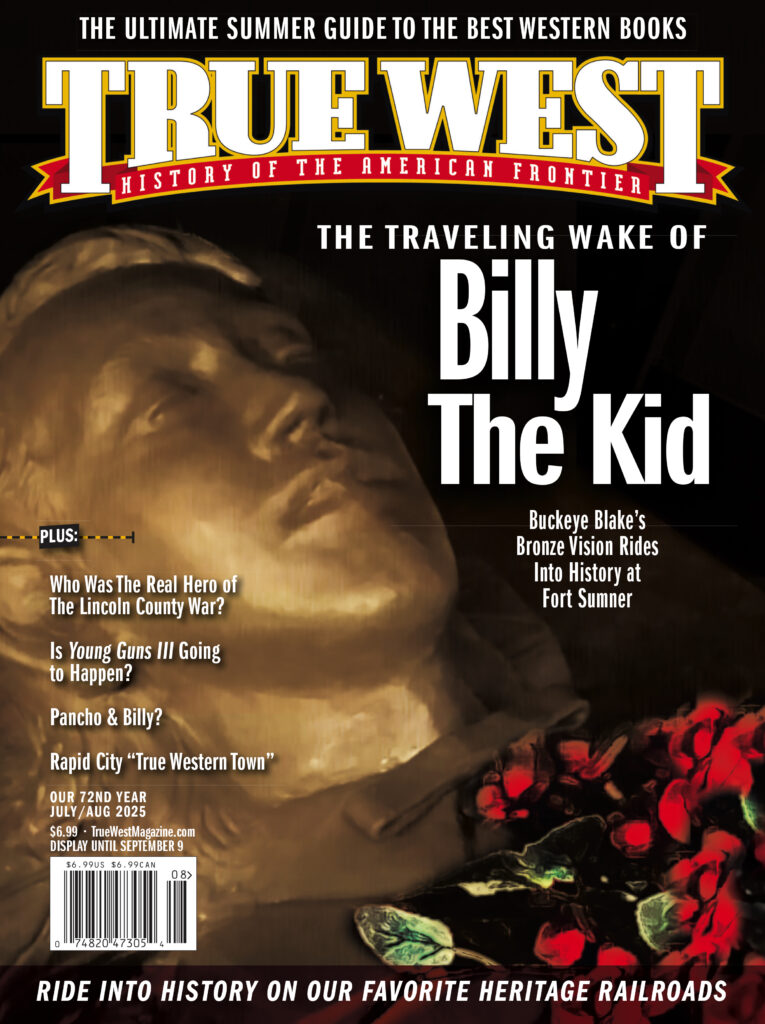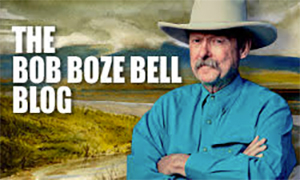Western historians and novelists are the trailblazers who inspire our curiosity and passion for America’s legendary lands and people
Why do you love the West? What brought you here? When was the first time you saw the Pacific Ocean? How old were you when you first crossed the Mississippi? Or walked in the Rocky Mountains? Or stood in awe at the sight of a Western sunset? Where were you when you knew you had to motor West? What was your first road trip across the Great Plains? Who inspired your desire to know more about this wondrous land we call the American West?
For me and many others with a lifelong curiosity for all matters and interests in our Western American culture, my answers to the above questions begin with my upbringing in the West—in Southern California and Arizona. Readers who reflect on these queries will quickly realize, as I do, that inspiration for their love of the West—especially its history, people and land—began with books. Sure, I grew up going to the Pacific Ocean—and my parents driving us back and forth from Los Angeles, across the Mohave Desert to Phoenix and points north and south in Arizona—but it was on that first trip East—by railroad in 1975—that my 12-year-old’s imagination finally began to meet the places I’d been reading and learning about for so many years. I still remember the thrill of pressing my face to the train’s window to see with my own eyes the Mississippi River for the first time. Or my disappointment that I was asleep when the Amtrak Super Chief passed through Dodge City in the middle of the night. (I finally saw Dodge City for the first time in 2020 when we were moving back to Arizona, but that is another story.)
Today, 42 years since I traveled across the country for the first time, Winston-Salem, North Carolina, to North Hollywood, California, via Interstates 40, 17 and 10, I still find my inspiration for travel—and my never-ending curiosity about the American West—in books—fiction, nonfiction, biography, photography, art, archaeological, natural history, geography, food, film, television. Name the topic on the West and I doubt there is a genre about the region that does
not pique my interest somehow or in some way.
And, I would believe that as readers of True West magazine the same is true for you. For a dozen years, I have been following the publishing trends of the Western—both fiction and nonfiction—and like the great Colorado River, from its source in the Rocky Mountains to its delta in the Sea of Cortez, the genre has been declared dead or on life-support by many a prognosticator. But, like the grand Colorado, the genre keeps flowing, keeps surprising, and keeps millions “alive” with its power, its magical life-giving ways.
In 2025, publishers of the Western novel, history and biography must work hard to reach their audiences. Bookstores and newsstands are fewer and smaller, while readers’ habits twist and turn between hardcovers, paperbacks, e-books and audibles. The mass market paperback has just been retired as a popular publishing form for publishers of Western fiction in favor of the larger trade paperback. Between the merchandiser, retailer and consumer, changes happen, but the Western rolls on, just like the mighty Colorado.
I believe the Western will always survive—as will my beloved Colorado—but like the river the genre must be supported, cared for and loved through both real and existential threats.
As readers and writers of Western literature we must support the genre from its source to its delta and make sure that we prevent it from drying up literally and figuratively before it is too late.
The Western publishers of 2025 are as varied and diverse as the Western landscape, and I encourage you to support your publishers from independents to universities, from individuals to Madison Avenue. We are the West, and we must remain united in our efforts to keep the Western alive.
Ten Western Classics for 2025
Our shelves are full of our favorites, including Western novels, biographies and histories. Mine are never too far from me, and I like to go back and reread them regularly. I also re-discover classics I have wanted to read or finish but have found reasons—or excuses—not to and must move them to the top of the list.
Here are 10 classic and personal favorite Westerns I am ready to reread, and you should too!
The Last Picture Show
by Larry McMurtry: Most would choose McMurtry’s Lonesome Dove as the Texan author’s classic to reread, but I suggest you start with The Last Picture Show.
The Big Sky
by A.B. Guthrie: My favorite of Guthrie’s epic Western trilogy, it inspired my interest in the history of the fur trade and mountain men.
Give Your Heart to the Hawks
by Win Blevins: I can read Blevins’ classic again and again and never tire of his literary history of the fur trappers.
Nevada
by Zane Grey: Maybe not at the top of everyone’s list of Zane Grey novels, I read it when I was 15, and it is still one of my favorite classic Westerns.
The Blessing Way
by Tony Hillerman: Isn’t it time we all go back and reread Hillerman’s first novel in the Leaphorn and Chee series, the series that inspired an entire modern genre of Western mysteries?
One-Eyed Sky
by Max Evans: Ole Max was a mentor of mine, and this novella captures the spirit of the enigmatic Westerner.
Hombre
by Elmore Leonard: Leonard was one of the most influential, popular Western fiction authors and screenwriters; I often go back to Hombre.
Deadwood
by Pete Dexter: His prose is so vivid you feel like your own shoes are covered in the blood and the mud of the streets of Deadwood in 1876.
The Great Plains
by Ian Frazier: This book influenced how I looked at America and the West as a travel writer.
Desert Solitaire
by Edward Abbey: This is Abbey at his very finest, and one I have read many times and will continue to share as one of the best books ever written about the American West—and one man’s personal relationship with the land and people.
Top Summer Reads in Nonfiction
If you love a good biography or history to enjoy on a long summer day, publishers of American Western history have provided a grand selection to choose from this year. I recommend these to start with, but don’t hesitate to go to the catalogs of these publishers and mine for more good reads for your summer reading.
Who doesn’t love some good old regional competition? Well, when it came to the West and horses, Westerners loved to race Easterners and their steeds, and Catharine Melin-Moser’s
When Montana Outraced the East: The Reign of Western Thoroughbreds, 1886-1900
(The University of Oklahoma Press, $34.95) looks at when Western horses ruled the paddock.
Entertaining from cover to cover,
Texas Red
by Red Steagall with Jim Jennings, foreword by Reba McEntire (Texas Tech University, $26.95) will remind you why he is one of our most beloved Westerners.
Theodore Roosevelt’s Wilderness Writings, New Edition
by Theodore Roosevelt, edited by Paul Schullery (Bison Books, $21.95) is a must-read for anyone who loves the natural wonders of the American West.
Do you love Texas and Texas history? If so,
Bridles and Biscuits: Contraband Culture in Spanish East Texas
by Gary L. Pinkerton in collaboration with Tom H. Gann (Texas A&M University Press, $33.35) will satisfy your interest in knowing more than your friends have ever known about a lesser-known but fascinating era in the history of the magnanimous land known as Texas.
The Essential Book of Pickup Trucks
by Fred Haefele (Bison Books, $21.95) leaves the 19th for the 20th century West and reminds us that what defines the history of the Western steed is more than Appaloosas and Mustangs.
Fort Whipple (Images of America)
by Worcester Bong and Mick Woodcock (Arcadia Publishing $24.95) tells the story in words and photographs of one of the Army’s oldest and most significant outposts in Arizona.
David A. Wolff’s
The Gateway to the Hills: Rapid City and the Central Black Hills, “Black Hills History Tours Series”
(South Dakota Historical Society Press, $19.95) is essential reading for travelers to this amazing, culturally rich corner of the American West.
John Gregory Country: Place Names and History of Ralston Buttes Quadrangle, Jefferson County, Colorado
by Charles and Mary Ramstetter, editors (Galaxy Press, $34) is a true collectible for Coloradans and those who love the Rocky Mountain State.
Texian Exodus: The Runaway Scrape and Its Enduring Legacy
by Stephen L. Hardin (University of Texas Press, $32.47) is one of Hardin’s finest volumes in his Texas history series.
Dorothea Lange: Seeing People
by Philip Brookman, Sarah Greenough, Andrea Nelson and Laura Wexler with Nana Adwoa Nyamekye Ferdnance, Elizabeth Fortune and Kyra March (Yale University Press, $55) is a classic and insightful look back into the soul of Lange’s artistry with the camera.
Bonus Books:
Going North: Memorabilia of Tourism in Alaska, Yukon and Northern British Columbia: Early 1900s to the Present
by Stan Cohen (Mountain Press Publishing, $24): If you love travel and books, this colorful book is perfect for your library
The Sheep Industry of Territorial New Mexico: Livestock, Land, and Dollars
by John M Wallace (University of New Colorado Press, $53) is an award-winning look at an overlooked industry that helped define New Mexico during territorial years, 1846 to 1912.
Top Summer Reads in Fiction
Arizona author V.C. Williams’
A New York Lady in Helldorado: Arizona’s First Woman Lawyer, A Novel Inspired by the Life of Sarah Herring
(Outlaws Publishing, $19.15) is a rollicking read inspired by the real history of territorial Tombstone.
Set in the Sandhills of Nebraska,
Return
by Kittredge McKee (Newman Springs Publishing, $45.95) is her third epic volume in the Prairie novel series, the sequel to Prairie and Homestead.
Western romance has been an essential element for Old West authors from the beginning of the genre, so why not add a little to your reading list this summer with Tracie Peterson’s second installment in “The Hope of Cheyenne” series,
Designed with Love
(BethanyHouse, $18.99)?
Scott F. Smith, following in the footsteps of his father, Cotton Smith, has hitched up with Wolfpack Publishing and written three new books in Cotton’s “Corrigan Brothers” series:
Vengeance Wears a Star, Cast Asunder and Blue Sky Reckoning.
Read them all for $11.99 each!
Coal
by J. Jason Grant (Kensington, $17.95) is a barn-burning Western with a fictional hero, El Diablo Negrito, who hasn’t been seen or read about since Jamie Foxx rode the silver screen in Django Unchained.
Dangerous Latitudes: A Novel
by Jack Woodville London (Stoney Creek Publishing Group, $22.95) is a historical adventure Western set in the Republic of Texas, a great follow-up to London’s prize-winning French Letters trilogy.
Michael Knost’s
Trail of Madness: Jack McCall and the Killing of a Legend
(Lawless Trails Press, $14.99) with a foreword by Johnny D. Boggs, will leave you searching for the truth in the mythic life of Wild Bill.
A Cowboy’s Quest: The Incredible Journey of Boyd Lee Parker
by Ray Graf (Independently Published, $17.99) is classic Western adventure that will remind you why our heroes have always been cowboys.
Eight Western Gems
for 2025
Whether you stack books on your nightstand, on your e-reader or in your backpack, the Western publishers of 2025 have made sure you will have plenty of new material to read this summer.
Here are eight new Westerns that are must-reads this year:
In the Days of Billy the Kid: The Lives and Times of José Chávez y Chávez, Juan Patrón, Martín Chávez, and Yginio Salazar
by James B. Mills (University of North Texas Press, $40): The Australian historian’s major follow-up to his groundbreaking Billy the Kid biography is one of the most important Western history books of the year.
Shadow of the Solstice:
A Leaphorn, Chee &
Manuelito Novel
by Anne Hillerman (Harper, $30) takes you back to Navajo country for a mystery that will keep you on the edge of your seat and waiting for Anne’s next entry in her award-winning series.
The Sharpshooter and the Showman: May Lillie, Pawnee Bill, and their Wild West Show by Chris Enss (Farcountry Press, $18.95): The only piece missing from Enss’s latest Western history is a pair of tickets to the revival of Pawnee Bill’s Wild West this summer. After reading The Sharpshooter and the Showman you’ll be wondering why we don’t have such great entertainers anymore.
Return to Sender:
A Longmire Mystery
by Craig Johnson (Viking, $27): The Wyoming author’s latest in the Walt Longmire series will instill a desire to see the series return to television or even the big screen.
The Jemez Mountains: A Cultural and Natural History
by Thomas W. Swetman (University of New Mexico Press, $24.95): Following in the footsteps of lauded geography professor Donald W. Meinig and literary historian John McPhee, Swetman provides a fascinating geographic and cultural history of this ancient region of New Mexico.
Coming August 5, 2025:
The Undiscovered Country: Triumph, Tragedy and the Shaping of the American West
by Paul Andrew Hutton (Dutton, $35): Hutton’s is the most anticipated history of the West of the year—and maybe the decade.
Coming August 19, 2025:
Deadwood: Gold, Guns, and Greed in the American West
by Peter Cozzens (Knopf, $35): The prize-winning author returns to the West, and Deadwood promises to be one of the best of the year.
Waiting in the Wings:
November 11, 2025: Mark Lee Gardner’s latest Western biography,
Brothers of the Gun: Wyatt Earp, Doc Holliday, and a Reckoning in Tombstone
(Dutton, $35) will be the hottest ticket in the West this holiday book-buying season.
The Western Book of the Summer
On August 5, 2025, Distinguished Professor of History at the University of New Mexico and Interim Curator of the Buffalo Bill Museum at the Buffalo Bill Center of the West in Cody, Wyoming, Paul Andrew Hutton, PhD, will have his long-awaited magnum opus of the American West published. The Undiscovered Country: Triumph, Tragedy and the Shaping of the American West is Hutton’s first major work since his award-winning The Apache Wars (Crown) was released in 2016. Like the lauded Western historian’s previous works, The Undiscovered Country is epic in proportion, literary in its style and magnificently layered in details, facts and little-known gems of history woven into the fabric of a wide-ranging narrative.
Like Hutton’s career, influenced by the giants of Western historiography, the distinguished academic has turned to seven major figures in American history—Daniel Boone, Red Eagle, Davy Crockett, Mangas Coloradas, Kit Carson, Sitting Bull and William “Buffalo Bill” Cody—to carry the weight of this panoramic tapestry of the American West. Spanning the growth of the United States of America from an 18th-century revolutionary congress of 13 colonies to a 20th-century imperial power, The Undiscovered Country tells our nation’s history in a style that can only be compared to Bernard De Voto’s Across the Wide Missouri, Stephen Ambrose’s Undaunted Courage and William Manchester’s Glory and the Dream.
Hutton’s generational story of the West will take the reader back to the fragile beginnings of the United States, and through the lives of seven unique and magnanimous men in American history, inspire us through the tragedy and triumph of their lives—and the nation’s real and imagined history. As Hutton says so eloquently in his Introduction: “They had built something grand, but at a terrible price that quickly morphed into a story that was both wildly romantic and oddly tragic.”
Take Me Home, Western Roads
In 2025, one of the most interesting and creative books on the American West to be published is the highly collectible and creative Santa Fe Trail: Chasing the Big West: poems and songs by Karla k. Morton and Alan Birkelbach, music by Michael Martin Murphy and art by Bob Boze Bell. (Madville Publishers $29.95). If you believe in magic, well, that is what Santa Fe Trail: Chasing the Big West is: inspiring, surprising, illuminating and mystical. The prose and poetry, the songs and artwork, the music and the muse—the American West—are all found inside this organic volume of words and creativity. It even has a bonus CD of music by Michael Murtin Murphy set to the lyrics of Morton and Birkelbach’s poems.
After reading Santa Fe Trail, you will be demanding volume two and wondering why it took you so long to remember why poetry, art and music are such a natural trio to tell the story of our beloved West.

